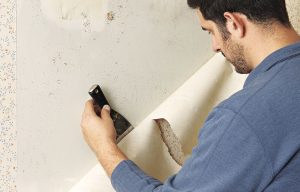The Complete Guide to Window Screen Repair in Your Home
In the summer, there’s nothing better than opening your windows to enjoy a fresh, warm breeze. But only if your window screens are still in good condition. If you have noticed bugs flying around your house, it could be your window screens. Window screens are rendered ineffective by tears and holes, but repairing these can be a daunting task if you have never fixed them before. Prepare to master the art and technique of replacing or repairing window screens. You’ll gain expert knowledge that will help you complete the job quickly and enjoy the warm weather. We’ll help you make sure your windows are in perfect condition so that you can enjoy the warm weather.
What is a window screen?
Window screens are a mesh-like protective material that is often installed above a window. They allow for fresh air to enter while keeping out insects, debris, and other large particles. The screen is usually made from fiberglass or aluminum and acts as a barrier to open windows. These screens are available in a variety of sizes and types to fit different window frames. They’re very common in modern houses, and they come in many shapes and sizes. You probably have window screens if you have windows that can open.
How do window screens get damaged?
The thinness of window screens makes them surprisingly strong, but they will wear out over time, just like any other part of your home. This can happen for several reasons with window screens:
Climate and environmental factors
Hail, storms, and high winds can all damage window screens. Hailstones can damage the screens. High winds can also cause them to be damaged.
Pets and Children
Window screens are not immune to accidents. You know this if you live with children or pets. By pushing or leaning on window screens, you can bend the frames or tear the screen material. Pet scratches, whether accidental or not, also cause window screen damage.
Pests and outdoor animals
The screens on your windows are a great way to keep unwanted guests from entering your home —, but they still try to do so. Occasionally, bugs, birds, and rodents will try to scratch or chew at your window screens, causing damage. The damage can become severe over time if it is not addressed.
General Wear and Tear
Window screens can be damaged by regular use or exposure to the weather. Wind and rain, as well as the constant opening and shutting of windows, can weaken screen materials and their attachments. This may lead to holes, tears, or a loosening of the frame.
How to Repair and Replace Window Screens Easily
With the right tools and instructions, repairing a window screen can be a simple home maintenance project. To improve your window screen, follow these easy steps:
Get the tools you need
Be sure to have the right tools before you start. Grab your trusty utility blade, a measuring device, a handy roller for spline, the screen material you want to replace, and the appropriate spline. It would help if you always had a screwdriver handy in case you need to fix your window frame.
Remove the damaged screen.
Check the edges of your window by opening it from the inside. Check for tabs, clips, or springs that are holding the screen in place. Remove or release these attachments in order to remove the screen. Place it on a flat, firm surface. Remove the torn screens by prying the spline from the channel with a screwdriver. It can be thrown away, along with the spline (if it cannot be reused), and you should wipe down the screen frame. It will be ready to receive a new screen.
Cut the material to size.
Roll out enough screening material to cover the frame. Use a utility blade to cut the screen into size. Leave two additional inches on each side. This will help ensure that your replacement screen fits properly.
Place the new window screen.
Place the newly cut screen material over your window frame and ensure that it covers the whole opening. Use clips or tape to fix it during installation temporarily. This will provide stability and ease the installation process.
Install the spline
A spline, a type of cord used to attach the window screen to the frame, is an essential component of the system. Start by inserting the spline into the groove, starting with one corner of your structure. Apply steady pressure with your spline roll to the spline in order to embed it into the frame. Continue rolling the spline along the groove, working your way around the edges until you get back to the starting point. This ensures the screen material will be held securely in place.
Trim any excess screen material.
Use your utility knife after the spline is snugly in place to trim the excess screen material around the edges of the frame. This step is not necessary, but it helps to ensure the window screen sits properly and gives a more polished look.
Install the screen
Reinstall your window screen after it has been repaired. Replace the window screen by gently placing it back into the frame and aligning the attachments that you previously identified. You’re almost done. Be careful and patient, then lock the screen into place where needed.
Follow these steps, and you will have a newly repaired window screen within no time!
The impossible task is made simple.
The window screens are an important but often overlooked part of your home. These screens act as a shield to keep unwanted animals out and warm air in when you open the windows. It is, therefore, important that you keep your window screens in top condition. It’s not as difficult to repair them as it might seem if you approach the task with patience and care. Following the above tips and investing some time will allow you to enjoy your restored window screen in no time.



